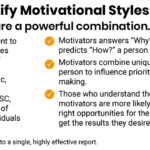Intent and impact are two essential concepts to keep in mind while communicating effectively. Intent refers to the desired outcome of an action, while the impact is how a particular action affects a person or group of people.
When there is a misalignment between intent and impact, it can lead to misunderstandings, frustration, and even conflict. For communication to be successful, you need to consider both the intent and impact for each message sent.
Teams, colleagues, and clients can benefit from this alignment by showing respect for their perspectives and values. It is necessary to explain how to align intent and impact to maximize effective communication by providing examples and suggesting strategies.
Intent vs Impact: Analysis of the Difference Between Them
What Does Intent Mean in Communication?
The intent in communication is the purpose behind our words and actions. It is the underlying meaning of what we wish to accomplish when we speak or act.
Intent can be explicit, such as when a person directly states their goal in a conversation. It can also be explicit when someone’s body language conveys their feelings about a certain topic without saying anything.
An individual’s intent can also be subtle, like the motivation behind their behavior at a particular moment. Intent can be conveyed through tone of voice, facial expressions, and gestures, which makes reading body language an important part of effective communication.
Understanding intent requires us to pay attention to context and recognize patterns in behavior over time. By being aware of our own intentions and that of others, we can better understand each other and communicate more clearly and precisely.
What Does Impact Mean in Communication?
Impact in communication is the influence that words and actions have on people and their environment. It is the ability to make an impression, elicit a reaction, or cause a state change. The impact can be both positive and negative, depending on how it is received.
Positive impact involves using communication to build relationships, create understanding, and solve problems. Negative impact consists in using communication to upset or disrupt.
Impactful communication requires thoughtfulness about what we say and do, as well as mindful listening to take into account the perspectives of others. Effective communicators can recognize potential impacts on another person from their words or actions before delivering their message.
With thoughtful communication, we can create meaningful connections and foster greater understanding between individuals and groups.
What Are the Two Types of Intentions?
Direct intent and Oblique intent are two types of intentions in Communication.
Direct Intent:
Direct intent is an intention to communicate specific information, ideas, or messages to a particular audience. It involves consciously deciding what we would like to speak and then delivering it in a way that is concise and accurate. This type of intent requires careful consideration and planning before engaging in communication.
Oblique Intent:
Oblique intent means communicate indirectly or through inference rather than explicitly stating one’s thoughts or opinions. This type of communication often involves subtle language or non-verbal cues.
It allows the receiver to interpret the message with some level of ambiguity. Oblique intent can be used when communicating sensitive topics and when trying to control how much information is shared between parties.
4 Examples of Intentional and Unintentional Communications and Their Respective Impacts
Intentional Communication:
Intentional communication sends a message to get the receiver to understand it in a certain way.
- Intentional Communication: Send a formal email to request a meeting with your manager.
Impact: It can help build relationships, foster better communication, and provide an opportunity to discuss goals and objectives in more detail.
- Intentional Communication: Writing a thank-you note after a job interview.
Impact: Demonstrates thoughtfulness, gratitude, and professionalism, which can leave a lasting impression on employers and may even influence hiring decisions.
Unintentional (Oblique) Communication:
On the other hand, unintentional communication is unconscious or unintentional. This could be something as subtle as body language or facial expressions, which can still affect how people perceive one another.
- Unintentional Communication: Slouching during a presentation.
Impact: You could give the impression that you need more energy and enthusiasm or take your work seriously.
- Unintentional Communication: Rolling your eyes in response to negative feedback from your supervisor.
Impact: Often interpreted as disrespectful, eye rolling may lead to strained relationships with your others. Or even disciplinary action such as suspension or termination of employment, depending on the severity of the situation.
What are the Impact Elements of Communication?
There are 8 impact elements of communication: source, message, channel, receiver, feedback, environment, context, and interference.
Source: The source refers to the individual who initiates the communication process. They may be either an individual or a group of people (speaker or sender).
Message: The message consists of the verbal and/or non-verbal content being conveyed by the source. It includes words, body language, facial expressions, and tone of voice.
Channel: The channel describes how the message reaches its destination (face-to-face conversation, phone call, or email).
Receiver: The receiver is one or more persons that interpret and process incoming information from the sender/source.
Feedback: Feedback occurs when either party responds after receiving a message. This acts as confirmation that both parties have understood each other correctly.
Environment: The environment comprises all external factors that can influence successful communication (physical setting, noise, etc.).
Context: Context relates to both parties understanding any underlying assumptions associated with their interaction. It includes cultural influences such as power dynamics within groups or familial relationships between individuals involved in the conversation).
Interference: Interference is anything that disrupts successful communication. This could include technical difficulties with equipment or distraction from unwanted outside sources such as background noise.
How to Align Intent and Impact for Effective Communication: A Comprehensive Approach
Closing the intent-impact gap requires consideration of cultural differences, aiming for clarity in communication, pausing before responding or acting, acknowledging & apologizing for mistakes, asking questions, and seeking clarifications, and self-reflection to ensure authenticity & non-judgment.
Doing these things can create a more positive dialogue that considers everyone’s viewpoints and leads to better outcomes.
1. Consideration of Cultural Differences When Crafting Messages
When crafting messages, consider cultural differences to ensure the message is conveyed appropriately. All participants should understand the message.
Be aware of any potential language barriers or communication norms that may vary between cultures to prevent miscommunication. This consideration ensures that the desired outcome is achieved and avoids any potential misunderstandings.
2. Aiming for Clarity in Communication to Avoid Misinterpretations
Clarity is key to successful communication, as misunderstandings and miscommunications can hurt relationships and cause unnecessary conflict. When attempting to communicate clearly, use simple language.
Also, pay attention to word choice, so there isn’t any confusion about what is being said or what is expected from the recipient due to the communication. Presenting facts without opinion or judgment can help ensure understanding and prevent potential disagreements.
3. Taking a Moment to Pause Before Responding or Acting
To ensure effective communication, take a moment before responding or acting upon a particular message. It can help give clarity and provide an opportunity for self-reflection on how best to respond following the intent behind one’s communications.
Pausing before responding also gives more time for thoughtful consideration. It leads to more meaningful conversations with less chance of miscommunication between both parties.
4. Openly Acknowledging Mistakes & Apologizing When Necessary
Openly acknowledging and apologizing if necessary, helps maintain mutual respect between both parties involved in the conversation. It ensures transparency regarding the intent behind actions/messages taken by one party towards another.
Apologies also provide closure where needed which helps create trust between those involved in the conversation. It allows them both to understand where each other stands from a mutual perspective.
5. Asking Questions & Seeking Clarifications as Needed
By asking questions and seeking clarification, two people can better understand one another, whether they are friends, family members, or colleagues at work. Using this approach, both parties gain clarity through explanations or evidence/data points provided by others.
This strategy helps build trust over time based on shared knowledge/experience gained over the conversation. Thereby it leads toward better alignment between the intent behind messages sent/received and the corresponding impact felt by the person receiving them.
6. Engaging in Self-Reflection to Ensure Authentic & Non-Judgmental Messages
Engaging in self-reflection allows one to evaluate their feelings about the situation before articulating them aloud. This strategy helps ensure the authenticity and non-judgmental nature of messages sent/received, leading towards a higher likelihood of achieving desired outcomes.
It reduces the chances of misinterpretation due to personal biases from the sender’s side, which could interfere with clear understandings exchanged.
How Can Personal Coaching Improve Communications and Align Intent to Impact?
Personal Coaching is an effective tool to help improve communication and align intent to impact. Individuals can better understand their feelings, thoughts, and intentions through a trained coach, constructively communicating these to others.
1. Improves Self-Awareness:
Personal coaching enables individuals to become self-aware and hone communication skills. It improves the clarity and effectiveness of their messages.
Through this process, individuals can learn how to listen, ask pertinent questions, and provide feedback to create a shared understanding. This improved communication establishes trust between people, increasing collaboration and helps them align their intent with the impact they hope to have.
2. Explores Feelings and Thoughts:
Individual coaching offers a safe space for individuals to explore their thoughts and feelings to gain insight into why they communicate the way they do. This helps them identify any thought patterns or behaviors hindering effective communication.
It also allows them to practice new techniques to help them better express themselves in different situations. These nuances in communication dynamics can help people make better decisions that will produce the intended impact associated with their original intent.
3. Guide Conversations in the Right Direction:
A personal coach can provide valuable guidance on approaching conversations with others and understanding what they are saying. Mentors can strengthen interpersonal relationships among teams and departments within an organization and facilitate productive business practices.
4. Bridge Gaps between Differing Perspectives:
Using coaching, individuals can effectively bridge gaps between different perspectives to work towards common goals. Employees’ job satisfaction increases when they learn how to communicate effectively with their peers and colleagues.
Besides increasing efficiency and success, it will improve team cohesion and interpersonal relationships. As a result, the overall productivity of organizations will improve since employees are now better equipped to work together and resolve conflicts more amicably.
These improvements in communication help facilitate an environment of respect and understanding. It leads to enhanced morale throughout the workplace.
How Important is Knowing the Intention of Someone When Taking any Action?
Action and intention are both necessary for effective action in the world. Intentional action is an action with full awareness and purpose, which carries more power than action without the proper intention.
While intentional actions require consideration and planning, actions without proper intention can be hasty or unplanned. It is essential to understand that there is such a thing as too much intention.
If one obsesses over every detail and consequence of their actions, they may become overwhelmed or paralyzed by the process. Striking the right balance between action and intention is key to successful outcomes.
Having a clear understanding of both action and intention helps to ensure that one’s actions are meaningful and impactful.





